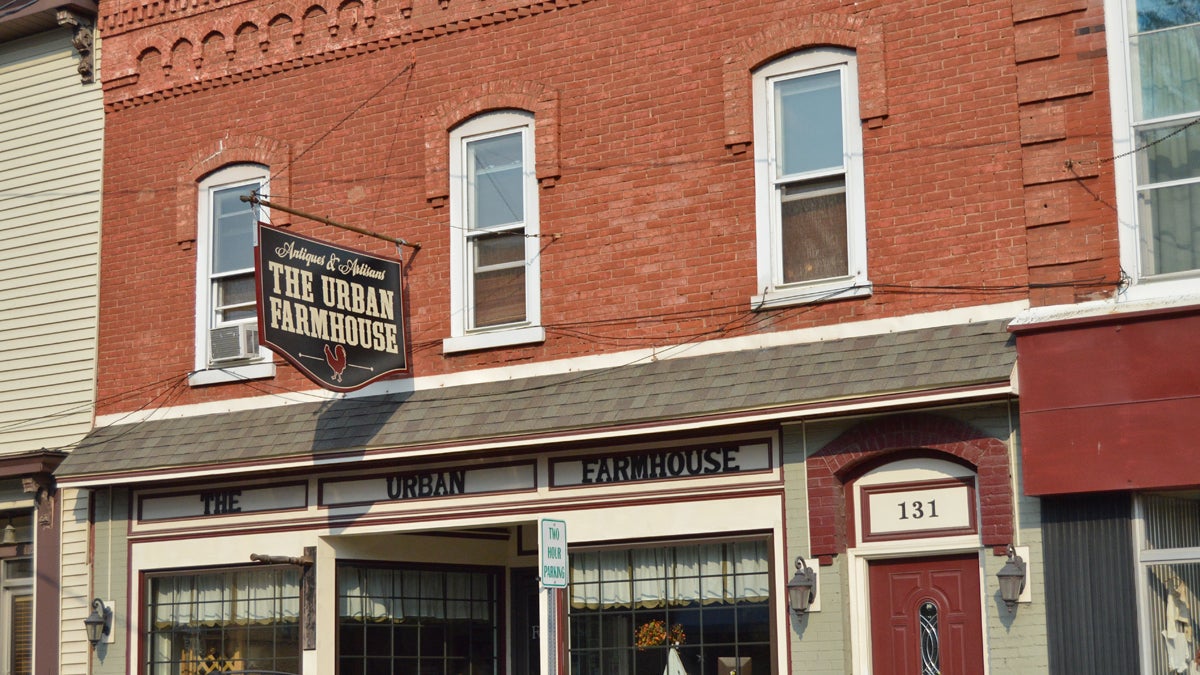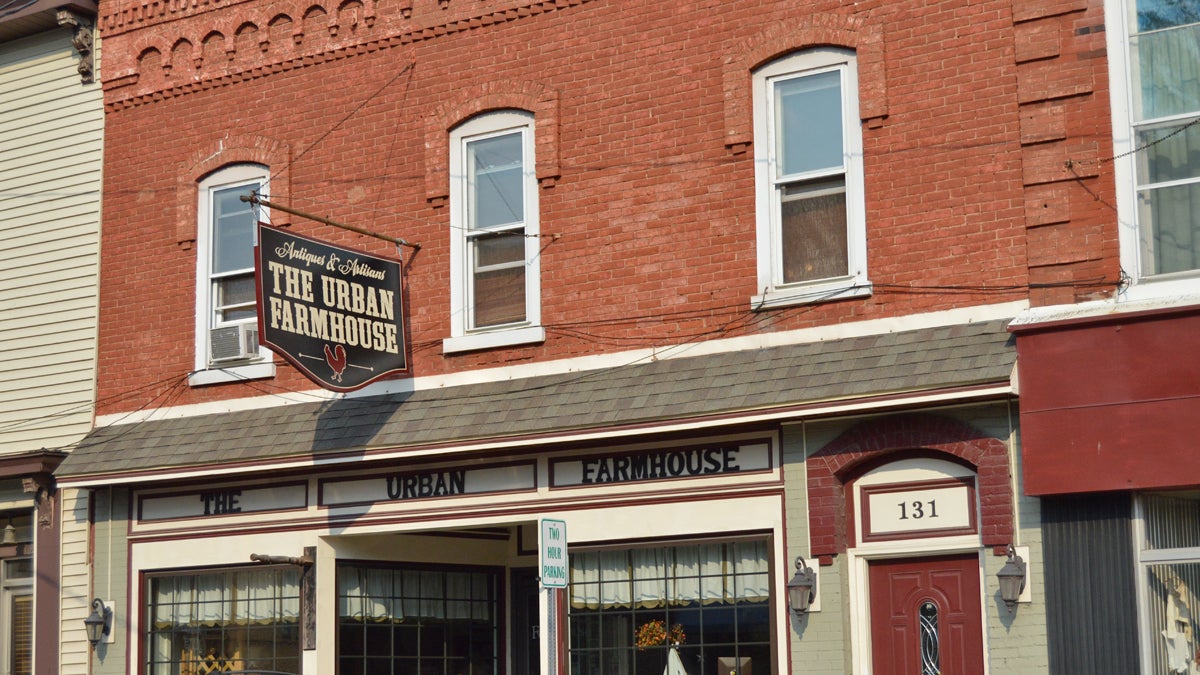Wake-up call or washout: flood insurance reform threatens Pa. river towns
Listen
Lurie Portanova owns a block of stores in downtown Jersey Shore. She says there's no way they could raise their brick buildings out of the flood zone. (Eleanor Klibanoff/WPSU)
Jersey Shore, Pennsylvania, is hundreds of miles from the boardwalk and the beach, but mere steps from the Susquehanna River. And while no one has made a reality show about this sleepy town yet, they do share one similarity with their namesake: flooding.
So when Michael and Lurie Portanova bought a strip of buildings downtown in 2012, they weren’t surprised to learn that they’d have to buy flood insurance, for about $3,000 a year.
But no one told them about a recently-passed law called the Biggert-Waters Act.
“We feel that we were kind of cheated there, because we would have walked away if we’d known it would cost us $40,000 a year,” says Lurie Portanova.
Biggert-Waters removed all the federal subsidies from flood insurance. The Portanova’s saw their annual insurance premium go from $3,000 a year to $40,000.
“Even if a flood came, I don’t think there is $40,000 worth of damage in these buildings,” says Michael Portanova. “And that’s just one year’s payment.”
Most people didn’t even know their flood insurance rates were government subsidized. They thought that the amount they paid was the cost of flood insurance. But if your house was built before the NFIP was started in 1968, the actual cost of flood insurance is far higher than what you’ve been paying.
Flood insurance premiums are calculated based on the lowest point of your house. New construction is built above the flood levels, and the insurance rates can be quite reasonable. But many Pennsylvania houses are old-school, with deep basements.
Fran McJunkin, the deputy director of planning for Lycoming County, says the rule of thumb for flood insurance in central Pa. is about $1,000 per foot below the floodline. So if six feet of a house’s basement is under the floodline, the true cost of insurance would start at $6,000 a year.
Rather than penalizing those who live in historic homes, the government subsidized flood insurance rates for those homes.
The system worked, according to McJunkin, until Katrina and Sandy, the two costliest hurricanes in U.S. history.
“You have this hit after hit after hit, and the National Flood Insurance is now $22 billion in the hole,” says McJunkin. “And how do we pay that back? We pay it back by having the people that are paying the premiums pay it back.”
And that’s how we got Biggert-Waters, and how the Portanovas got a bill for $40,000. That’s also how Congress got so many angry phone calls and letters that large parts of the law were repealed in 2014.
Now, your premium can only increase up to 18 percent a year.
“Congress has decided that we are going to have what they call the long glide path,” says McJunkin.
This buys people some time to pick their poison. They can get their house into compliance, either by filling in the basement, raising the house, or both. But that doesn’t work for everyone.
“These are brick buildings that are at least three feet thick,” says Lurie Portanova. “The foundation is seven feet thick. You’re not going to mitigate by raising these buildings.”

Lurie Portanova owns a block of stores in downtown Jersey Shore. She says there’s no way they could raise their brick buildings out of the flood zone. (Eleanor Klibanoff/WPSU)
Or, you can pay off your mortgage. You’re only required to have flood insurance so long as you have a mortgage.
And then there is the third option: move.
That’s where these changes could really hurt Pennsylvania. Half of Jersey Shore sits in the floodplain. The town can’t afford to lose half of its tax base, but many residents can’t afford the full insurance rates either. Portanova predicts that, once the rates go up, Jersey Shore will turn into a ghost town.
“It’s time for some tough conversations,” says McJunkin. “We need to decide, where is our commercial center going to be. Where are we going to build new residential structures.”
McJunkin thinks these changes are serving as a long-overdue wake-up call. For her, flood insurance isn’t the problem…living or having a business in the floodplain is the problem.
Because, she says, “nobody recovers from a flood. Flood insurance does not make a person whole after a flood.”
Even more than the rising waters of the Susquehanna, flood insurance reform could be the death toll for struggling river towns.
“The dramatic impact [these changes] could have on school districts, local municipalities and counties would really decimate those municipal budgets,” says George Hartwick, a Dauphin County commissioner.
His county is looking at large-scale projects, like river rerouting and flood protection. But a borough of Jersey Shore’s size can’t justify or afford that sort of investment.
Though, as Lurie Portanova points out, they can’t afford flood insurance either. And as long as she’s dreaming…
“If I could afford to pay $40,000 a year, I think I would pay towards putting a dike in to save the town.”
To some people, a town like Jersey Shore is worth saving.
WHYY is your source for fact-based, in-depth journalism and information. As a nonprofit organization, we rely on financial support from readers like you. Please give today.



